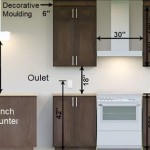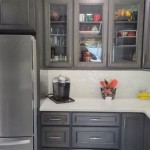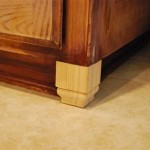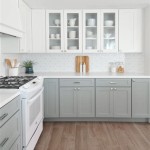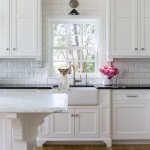How to Remodel Your Kitchen on a Budget
Remodeling a kitchen can significantly enhance a home's value and improve the homeowner's daily living experience. However, kitchen renovations often carry a hefty price tag, deterring many from undertaking such a project. It is possible to achieve a refreshed and functional kitchen without incurring exorbitant costs. This article outlines strategies for remodeling a kitchen on a budget, focusing on cost-effective approaches and wise decision-making.
Planning and Prioritization
The cornerstone of any successful budget-friendly kitchen remodel is meticulous planning. Before demolition begins, a comprehensive plan should be in place, outlining the scope of the project, the desired aesthetic, and, most importantly, the budget. This stage involves taking detailed measurements of the existing kitchen space, researching different materials and appliances, and obtaining quotes from various suppliers and contractors if external assistance is required.
Prioritization is crucial. Determine which aspects of the kitchen are most in need of improvement and allocate the budget accordingly. For example, if the existing cabinets are structurally sound but aesthetically outdated, refacing or repainting them might be a more cost-effective option than replacing them entirely. Similarly, if the layout of the kitchen is functional, avoiding major structural changes, like moving plumbing or electrical lines, will significantly reduce expenses.
A detailed budget should break down all anticipated costs, including materials, labor (if applicable), permits, and a contingency fund for unexpected expenses. Aim to set aside approximately 10-15% of the total budget as a contingency. During the planning phase, alternative materials and approaches should be researched to provide options should the initial choices prove too costly.
Consider drawing a detailed kitchen layout, either manually or using free online kitchen design tools. This visual aid helps to solidify the design and allows for the identification of potential problems before work begins. It also provides a clear blueprint for contractors, ensuring accurate quotes and minimizing misunderstandings.
Cost-Effective Material Selection
Selecting the right materials is paramount in controlling costs during a kitchen remodel. The key is to balance aesthetics and durability with affordability. Often, high-end materials can be substituted with lower-cost alternatives without sacrificing quality or style.
Cabinets: Rather than opting for entirely new custom-built cabinets, explore refacing or repainting existing cabinets. Refacing involves replacing the cabinet doors and drawer fronts with new ones, while repainting provides a fresh look at a lower cost. Another option is to consider semi-custom or stock cabinets, which are more affordable than custom options and come in a variety of styles and finishes. Look for sales and closeout deals at home improvement stores to further reduce costs. Open shelving can also be incorporated to reduce the number of cabinet doors needed.
Countertops: Granite and quartz are popular countertop choices, but they can be expensive. Laminate countertops have come a long way in recent years and offer a stylish and durable alternative at a fraction of the cost. Butcher block countertops are another budget-friendly option that adds warmth and character to the kitchen. Consider exploring remnant pieces from stone yards; these are often sold at discounted prices and can be suitable for smaller kitchens or islands.
Flooring: Luxury vinyl tile (LVT) and laminate flooring are durable, water-resistant, and relatively inexpensive alternatives to hardwood or tile. These materials are also easier to install, potentially saving on labor costs. Consider purchasing flooring in bulk to take advantage of discounts. Shop around and compare prices from different retailers to find the best deals.
Backsplash: The backsplash is an area where creativity can shine without breaking the bank. Subway tile is a classic and affordable option that can be customized with different grout colors and patterns. Alternatively, consider using peel-and-stick backsplash tiles, which are easy to install and come in a variety of designs. Using paint on the backsplash is another very inexpensive option, but needs to be the correct type of paint and properly sealed as it is in a high moisture area and needs to be cleaned regularly.
Appliances: Appliances often represent a significant portion of the kitchen remodel budget. Avoid purchasing top-of-the-line models with unnecessary features. Opt for energy-efficient appliances that offer a good balance of performance and price. Consider purchasing gently used or refurbished appliances from reputable dealers. Look for sales, rebates, and package deals to save money. Prioritize essential appliances and consider deferring the purchase of less crucial items until funds are available.
Do-It-Yourself (DIY) and Labor Cost Reduction
One of the most effective ways to save money on a kitchen remodel is to undertake some of the work as a do-it-yourself (DIY) project. Tasks such as demolition, painting, tiling (for those with experience), and installing hardware can be completed by homeowners to reduce labor costs.
Before embarking on any DIY project, it is essential to assess one's skills and abilities honestly. While some tasks may seem straightforward, they can be more challenging than anticipated. Watch online tutorials, read instructional guides, and consult with experienced friends or family members before starting any DIY project.
If professional assistance is required, obtain quotes from multiple contractors and carefully compare their bids. Ask for references and review their previous work. A detailed contract should be in place before any work begins, outlining the scope of the project, the timeline, and the payment schedule. Consider hiring contractors on an hourly basis rather than a fixed-price contract, especially if the scope of the project is uncertain.
Even if hiring a contractor for major tasks, consider handling the preparation work, such as removing old appliances, clearing the kitchen, and protecting surrounding areas. This reduces the amount of time the contractor needs to spend on the project, saving on labor costs.
When sourcing materials, consider purchasing them yourself rather than relying on the contractor. This allows for greater control over the budget and the opportunity to shop around for the best deals. However, it's crucial to coordinate with the contractor to ensure that the correct materials are purchased and delivered on time.
When selecting which parts to DIY, consider the risks involved. Electrical and plumbing require specialized knowledge and should only be undertaken by qualified professionals. Improperly installed electrical or plumbing systems can be dangerous and costly to repair.
Recycling and repurposing existing materials is another way to save money and reduce waste. Old cabinet doors can be repurposed into shelves or other decorative items. Salvaged lumber can be used for countertops or backsplashes. With a little creativity, existing materials can be given a new lease on life.
Negotiating prices with suppliers and contractors is an essential skill for budget-conscious homeowners. Don't be afraid to ask for discounts or explore alternative options. Cash payments may sometimes result in a lower price. Clearly communicating budget constraints and expectations from the outset can help to facilitate effective negotiations.
Sticking to the original plan is crucial to avoiding budget overruns. Scope creep, which refers to the gradual addition of new features or changes to the project, can quickly increase costs. Before making any changes to the plan, carefully consider the impact on the budget and timeline. If a change is necessary, find ways to offset the additional cost by making savings elsewhere.
Properly maintaining the remodeled kitchen will extend its lifespan and prevent costly repairs in the future. Regularly clean and inspect appliances, cabinets, and countertops. Address any minor issues promptly to prevent them from escalating into major problems.
By carefully planning, prioritizing, selecting cost-effective materials, undertaking DIY projects, and negotiating prices, homeowners can successfully remodel their kitchens on a budget without sacrificing quality or style. A well-planned and executed kitchen remodel can significantly enhance the value and enjoyment of their home.

Before And After My Budget Kitchen Remodel Toolbox Divas

Diy Budget Kitchen Renovation Our Gorgeous Reveal Dwell Beautiful

Kitchen Remodel Ideas On A Budget For Impactful Makeover

Budget Under 100 Easy Diy Makeover Kitchen Organization Home Room Make Over Decorate With Me

Kitchen Remodel On A Budget Fresh Squeezed Life

8 Ways We Saved Big On Our Frugal Kitchen Remodel Thrifty Mom

Remodel A Kitchen On Budget

10 Budget Kitchen Remodel Ideas Yelp

Kitchen Remodel Ideas On A Budget For Impactful Makeover
Our Diy Kitchen Remodel Before And After Tackling A Farmhouse Makeover On Budget Part 1 Joyfully Treasured
Related Posts

